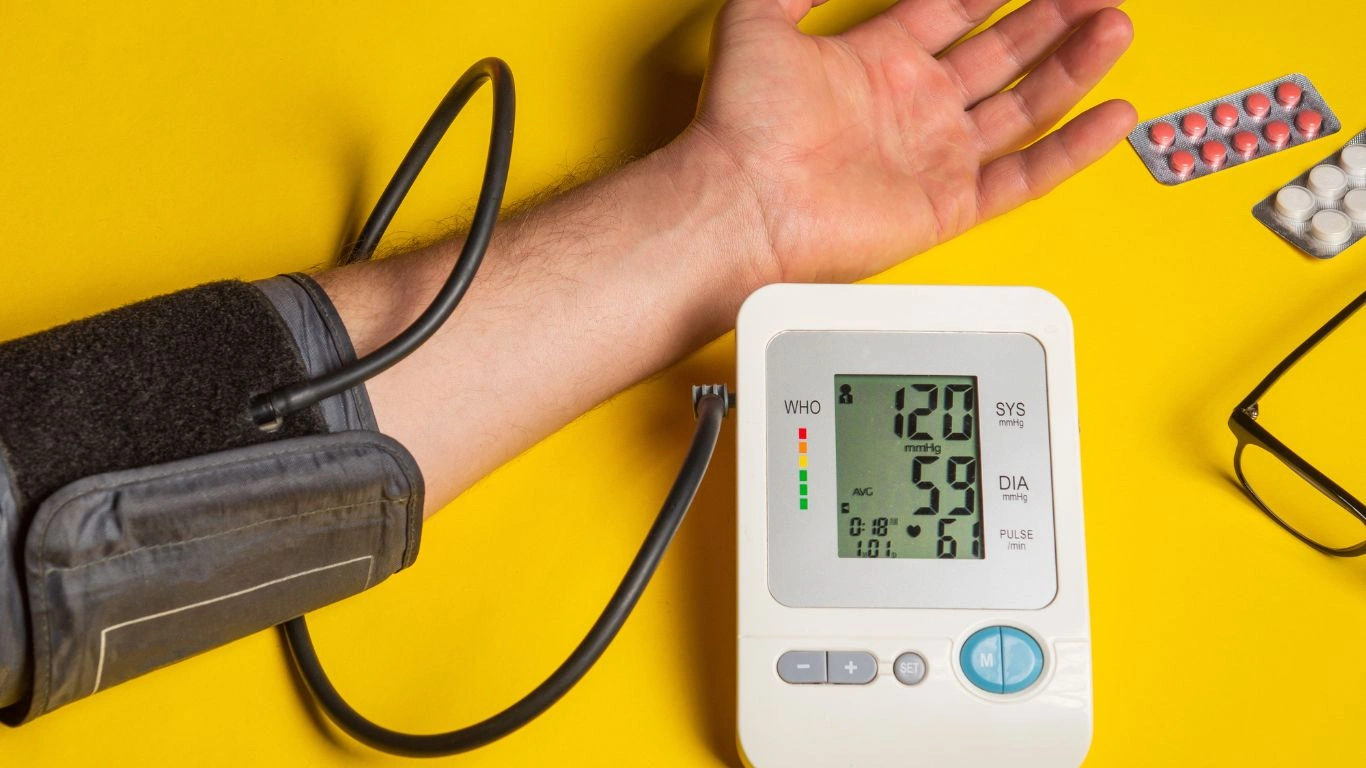Delicious Hypertension-Friendly Comfort Foods You’ll Actually Crave
When you’re juggling hypertension and also craving your favorite comfort foods, things can get a little tricky, right? As an internal medicine physician who’s worked extensively in hypertension management, I’ve seen just how powerful food choices can be—not just for controlling blood pressure, but for making people feel truly satisfied. That’s why I’m diving into how to make hypertension-friendly comfort foods that actually taste like the real deal. And yes, I’m talking mashed potatoes, fried chicken (with a twist), hearty stews, and even mac and cheese. You don’t have to give up that soul-hugging warmth of your favorite meals. You just need to know how to tweak them smartly. Let’s break it down.
 What Makes a Comfort Food “Hypertension-Friendly”?
What Makes a Comfort Food “Hypertension-Friendly”?
First things first, what does “hypertension-friendly” even mean? In simple terms, it’s food that won’t send your blood pressure skyrocketing. That typically means:
- Low in sodium – Sodium is one of the biggest triggers for high blood pressure spikes. Even “hidden salt” in canned goods or seasoning mixes adds up fast.
- Rich in potassium – Think bananas, sweet potatoes, leafy greens. Potassium helps your body flush out excess sodium and relax blood vessel walls.
- Low in saturated fats – This helps support vascular health and reduce inflammation. Swap out animal fats for heart-healthy oils like olive or avocado oil.
- High in fiber – Whole grains, legumes, and veggies help regulate blood pressure and keep you full longer.
When I talk to patients about comfort food, most imagine giving up flavor, texture, or fullness. But honestly, it’s all about finding creative, simple swaps that still satisfy emotionally and physically. I’m not about bland steamed veggies unless you really love them (and if you do, more power to you!).
 The Real Secret? Cooking With Flavor Instead of Salt
The Real Secret? Cooking With Flavor Instead of Salt
Let’s talk flavor. This is where a lot of people get stuck. “If I can’t use salt, how can I make it taste good?” — I hear this all the time. My answer: herbs, spices, and umami. In fact, many cuisines around the world manage to be both rich in flavor and heart-friendly. It’s not about deprivation—it’s about elevation.
Here are some of my favorite flavor boosters:
- Smoked paprika – Adds depth and smokiness, especially great for replacing bacon or sausage vibes.
- Garlic and onion (fresh or powdered) – Naturally flavorful and even support vascular health.
- Lemon juice or zest – Brightens up dishes and helps your palate perceive more “saltiness” without using actual salt.
- Nutritional yeast – A great cheesy, nutty flavor addition with added B-vitamins.
- Low-sodium soy sauce or coconut aminos – Adds savory umami while keeping sodium in check.
One of my personal tricks when craving something rich is to roast garlic until it’s buttery soft and mash it into potatoes or stir it into soups. It gives that hearty kick without a drop of salt.
 Hypertension-Friendly Versions of Classic Comfort Foods
Hypertension-Friendly Versions of Classic Comfort Foods
Let’s roll up our sleeves and get into some real-life swaps that I actually use at home and often recommend to patients. These aren’t sad “diet food” versions—these are full of flavor and satisfaction.
1. Mashed Potatoes ➜ Mashed Cauliflower or White Beans
Stay with me on this one. Cauliflower mashed with olive oil, roasted garlic, and a touch of Greek yogurt is creamy, fluffy, and surprisingly close to the real thing. For more protein and fiber, mashed cannellini beans with rosemary and lemon zest are ridiculously comforting. Bonus: they’re super filling and don’t spike your blood pressure.
2. Fried Chicken ➜ Oven-Crisped or Air-Fried Chicken
This one is a game-changer. I make a buttermilk-brined chicken (with low-fat kefir instead of actual buttermilk), coat it in seasoned whole wheat panko, and bake it until golden. The result? Crunchy outside, juicy inside, and no grease puddle in sight. Air-fryers also work wonders here. Trust me, even my skeptical cousin was converted after one bite.
3. Mac & Cheese ➜ Creamy Veggie-Based Cheese Sauce
Okay, this one took me a few tries to nail, but once I swapped heavy cream for pureed butternut squash or sweet potato (with a bit of low-sodium broth, garlic, and nutritional yeast), it changed everything. You still get that cheesy comfort, but with way fewer fats and loads more fiber and potassium. Sometimes I sprinkle on a bit of real parmesan at the end for extra punch—it doesn’t take much.
4. Chili ➜ Lean Bean Chili with Smoked Spices
Classic chili tends to be a sodium bomb if you’re not careful. My go-to version uses no-salt-added canned beans, fire-roasted tomatoes, and smoked paprika, cumin, and a dash of cocoa powder. Add chopped mushrooms for that meaty texture without needing ground beef. It’s warming, bold, and even better the next day.
These small tweaks can make a big impact not only on your blood pressure but also on how empowered you feel about your food choices. I can’t count how many times patients told me they thought healthy eating would be boring—until they tried one of these recipes and were genuinely surprised at how satisfying it was.
 Breakfast Comforts That Don’t Spike Your BP
Breakfast Comforts That Don’t Spike Your BP
Let’s talk about mornings—because if you’re anything like my patients (and me on busy clinic days), breakfast needs to be easy, tasty, and something that doesn’t blow your sodium budget before 10 a.m. And no, you don’t have to settle for dry toast or sad oatmeal unless you want to. Here’s how to reinvent your morning favorites while keeping them hypertension-friendly.
1. Pancakes ➜ Oat Banana Pancakes with No-Salt Nut Butter
This is one of my weekend go-tos. Mash a banana, mix it with oats, a pinch of cinnamon, and an egg (or flax egg), and boom—pancake batter. These cook up beautifully in a non-stick skillet with a touch of avocado oil. I top mine with natural peanut or almond butter (just make sure it’s unsalted) and a sprinkle of hemp seeds. It’s hearty, satisfying, and keeps blood pressure stable thanks to the potassium-fiber combo.
2. Scrambled Eggs ➜ Tofu or Veggie Scramble
Now don’t roll your eyes at tofu just yet—I promise, when you sauté it with turmeric, garlic powder, paprika, and veggies like spinach or bell peppers, you’re not missing a thing. It’s packed with protein and the texture hits just right. You can even do half tofu, half egg if you’re transitioning or cooking for mixed preferences at home.
3. Breakfast Sandwich ➜ Avocado Toast with Roasted Veggies
Classic breakfast sandwiches are often sodium bombs (I’m looking at you, bacon-egg-cheese-on-a-biscuit). Instead, grab a slice of whole grain or sprouted bread, smash on some avocado, and top with roasted tomatoes, mushrooms, or even a poached egg. Sprinkle with nutritional yeast and crushed red pepper for that flavor punch without the salt overload. Bonus: avocado brings heart-healthy fats that support vascular health.
 Meal Prep for Comfort and Control
Meal Prep for Comfort and Control
If you’ve ever tried to eat healthy on a hectic weekday, you know the struggle. That’s where meal prepping comes in. Not the kind where you eat dry chicken and broccoli five days straight—but real, soul-warming meals you actually want to eat.
When my patients ask for help with this, I always suggest prepping in components rather than full meals. That way you can mix and match, and it doesn’t feel like you’re eating the same thing every day.
My favorite heart-friendly meal prep staples:
- Roasted sweet potatoes – Naturally sweet, full of potassium, and great for bowls or breakfast hash.
- Brown rice or quinoa – Whole grains that keep blood sugar and BP stable.
- Stewed black beans or lentils – Huge fiber and protein payoff with minimal sodium if you cook them yourself or rinse canned ones well.
- Grilled or air-fried chicken thighs – More flavor than breasts, and still lean enough. I use a no-salt jerk or Cajun rub for extra kick.
- Roasted or sautéed greens – Kale, spinach, or collards with garlic and lemon is such an underrated comfort side.
I like to assemble these into bowls, wraps, or soups depending on my mood. It gives you flexibility and saves you from hitting the drive-thru just because it’s 6:30 PM and you’re tired.
 Yes, You Can Still Have Dessert
Yes, You Can Still Have Dessert
Oh yes, we’re going there. I can’t tell you how often people assume desserts are totally off-limits when managing hypertension. Not true! You just have to get a little creative. It’s not about cutting out sweetness altogether—it’s about being mindful of added sugars and sodium (yes, sodium hides in desserts too!).
1. Chocolate Fix ➜ Avocado Cocoa Mousse
I know it sounds suspicious, but blended ripe avocado, unsweetened cocoa powder, a drizzle of maple syrup, and a splash of vanilla make the creamiest, richest mousse. Chill it and top with berries—chef’s kiss. No salt, heart-healthy fats, and potassium-rich.
2. Ice Cream Swap ➜ Frozen Banana “Nice Cream”
Freeze ripe bananas, blend them with a splash of oat milk and maybe some cinnamon or peanut butter, and you’ve got a dreamy, scoopable treat. Add a few dark chocolate chips (the lower sugar kind) if you’re feeling fancy. Kids and adults love this one—it’s a regular in my house.
3. Baked Goods ➜ Oatmeal Raisin Cookies with a Twist
I make a batch of soft cookies using mashed banana, rolled oats, cinnamon, raisins, and ground flax. No added salt, no refined sugar, but still hits that sweet-craving spot. You can even toss in unsweetened shredded coconut or chopped walnuts for texture. They’re easy to prep ahead and freeze too!
Don’t Forget the Snacks (We All Need Them)
Let’s be honest—comfort food cravings don’t always happen at mealtimes. The 3 PM slump or late-night Netflix snack attack? Totally real. Here are a few snacks I keep on hand that don’t sabotage blood pressure goals.
- Homemade popcorn – Air-popped with a mist of olive oil spray and a sprinkle of smoked paprika or garlic powder.
- Hummus with cucumber or bell pepper slices – Creamy, crunchy, and full of flavor.
- Unsalted mixed nuts – Just a handful goes a long way. Almonds, walnuts, or pistachios are great picks.
- Greek yogurt with berries and chia seeds – High in protein, potassium, and antioxidants.
Honestly, I recommend patients build snacks into their plan rather than avoiding them completely. It keeps you satisfied, and when they’re made with whole ingredients, they can actually support blood pressure control.
So next time you feel like snacking or digging into your favorite comfort dish, you don’t have to feel like you’re breaking some “healthy eating” rule. These tweaks make it possible to enjoy the flavors and textures you love—without the blood pressure spike.
 Eating Out or Ordering In: Making Smart, Hypertension-Friendly Choices
Eating Out or Ordering In: Making Smart, Hypertension-Friendly Choices
Alright, so we’ve tackled cooking at home—but what about when you’re dining out or getting takeout? Because let’s be real, there are nights when cooking just isn’t going to happen. Whether you’re celebrating something, catching up with friends, or just too exhausted to look at a cutting board, you can still keep your blood pressure goals in mind without feeling like you’re missing out.
I always remind my patients: you have more control than you think, even when you’re not the one holding the spatula.
Tips I Use (and Recommend) When Dining Out:
- Scan the menu online first – Most restaurants post their menus online. I quickly scan for grilled options, veggie sides, or dishes that can be modified.
- Ask for sauces and dressings on the side – They’re usually packed with sodium. Controlling the amount gives you freedom without ditching flavor entirely.
- Don’t be afraid to modify – Ask if they can cook without added salt or swap fries for steamed or roasted vegetables. Most places are surprisingly accommodating if you ask nicely.
- Go halfsies – If the portions are huge (they usually are), I’ll split an entrée with someone or ask for a to-go box upfront. It helps keep sodium intake down without leaving you feeling overstuffed.
One of my favorite hacks? Choosing ethnic cuisines that naturally lean into hypertension-friendly ingredients. Thai, Indian, and Mediterranean cuisines often offer plant-forward, flavorful dishes using herbs and spices instead of salt.
 Keeping the Soul of Your Family Recipes Without the Sodium Bomb
Keeping the Soul of Your Family Recipes Without the Sodium Bomb
This one hits close to home for a lot of us. Our comfort food traditions—those handed-down recipes from grandma or mom—can be deeply emotional. They’re tied to memories, holidays, stories. And yes, a lot of them are heavy on salt, butter, and cream. But here’s the good news: you can keep the heart of those recipes intact and still support your actual heart health.
Here’s how I help patients (and myself) lighten up those beloved dishes:
- Start with one substitution – Don’t overhaul the whole dish at once. If a stew calls for bouillon cubes (super salty), try replacing just one with a no-sodium broth and extra herbs. Build from there.
- Swap dairy for creamy vegetables – Think pureed cauliflower, carrots, or squash to replace heavy creams or cheese sauces. They add silkiness and body without added salt or fat.
- Use smoked or roasted elements – If a dish relied on ham hocks or bacon for flavor, try smoked paprika or roasted mushrooms to get that same depth. It’s surprising how far a little umami goes.
- Get the family involved – Cooking these new versions with your kids or siblings can turn into a shared tradition of its own. Plus, you’re modeling healthier habits that ripple through generations.
I recently adapted my grandmother’s gumbo recipe using low-sodium broth, plant-based sausage, and loads of okra and bell pepper—and it still tasted like home. My dad gave it a skeptical look at first, but he cleaned his plate. That’s the kind of feedback I love most.
Why Comfort Food Matters in Hypertension Management
Here’s the thing I always emphasize with patients: food is never just about nutrients. It’s about comfort, identity, connection, and joy. And when we talk about managing hypertension, we can’t overlook that emotional side.
If every meal feels like a punishment or a restriction, long-term success is going to be tough. But if meals feel like nourishment—both physically and emotionally—people stick with it. They thrive. They enjoy their food and their health. That’s the sweet spot we’re aiming for.
As a physician, I’ve seen blood pressure numbers improve not just with medication or exercise, but with consistent, sustainable changes in the kitchen. And honestly, watching someone light up because they found a way to make their favorite dish healthier without losing what they love about it? That’s the best part of my job.
References
- American Heart Association
- Centers for Disease Control and Prevention
- National Heart, Lung, and Blood Institute
- National Library of Medicine
- Academy of Nutrition and Dietetics
Disclaimer
This article is for informational purposes only and is not intended as medical advice. Always consult your healthcare provider before making any significant changes to your diet, especially if you have a medical condition like hypertension. While the author is a licensed internal medicine physician, individualized care is essential and recommendations may not apply to all individuals.

Dr. Gwenna Aazee is a board-certified Internal Medicine Physician with a special focus on hypertension management, chronic disease prevention, and patient education. With years of experience in both clinical practice and medical writing, she’s passionate about turning evidence-based medicine into accessible, actionable advice. Through her work at Healthusias.com, Dr. Aazee empowers readers to take charge of their health with confidence and clarity. Off the clock, she enjoys deep dives into nutrition research, long walks with her rescue pup, and simplifying medical jargon one article at a time.

 What Makes a Comfort Food “Hypertension-Friendly”?
What Makes a Comfort Food “Hypertension-Friendly”? The Real Secret? Cooking With Flavor Instead of Salt
The Real Secret? Cooking With Flavor Instead of Salt Breakfast Comforts That Don’t Spike Your BP
Breakfast Comforts That Don’t Spike Your BP Meal Prep for Comfort and Control
Meal Prep for Comfort and Control Yes, You Can Still Have Dessert
Yes, You Can Still Have Dessert Keeping the Soul of Your Family Recipes Without the Sodium Bomb
Keeping the Soul of Your Family Recipes Without the Sodium Bomb




